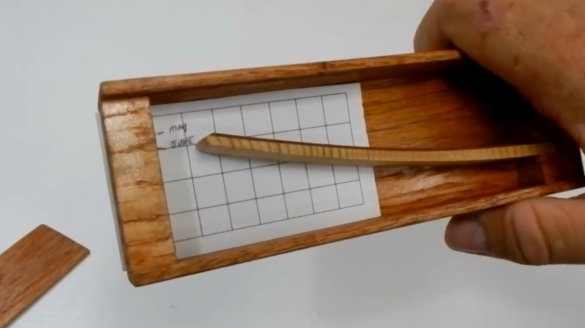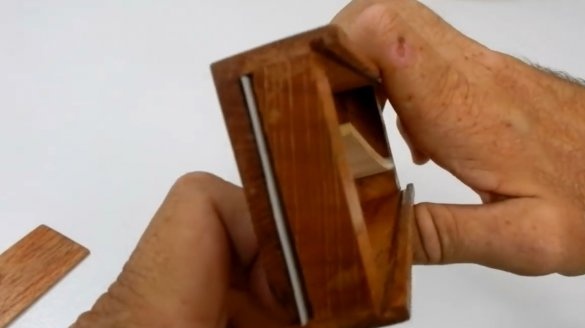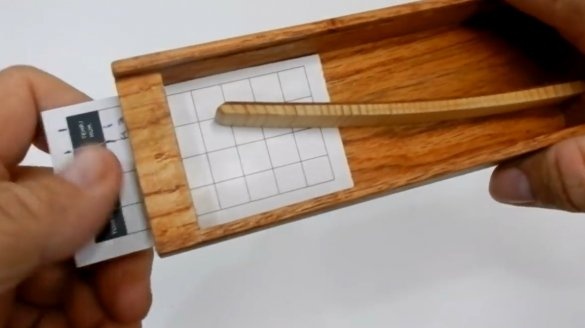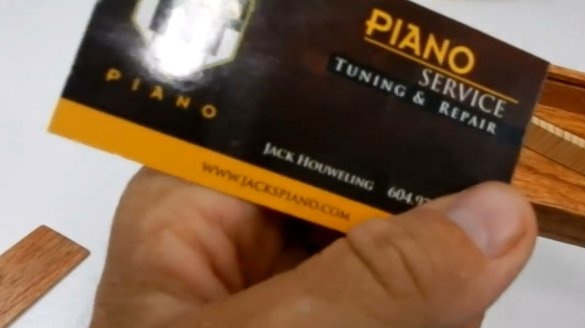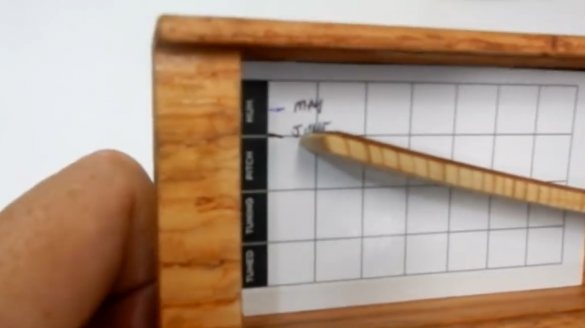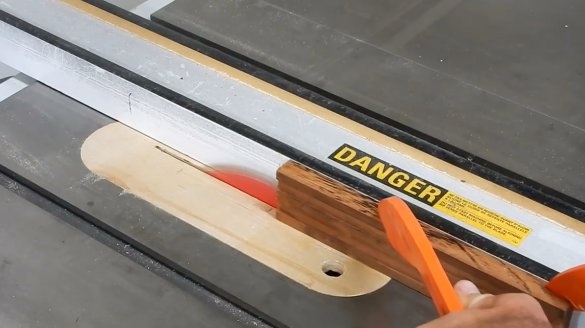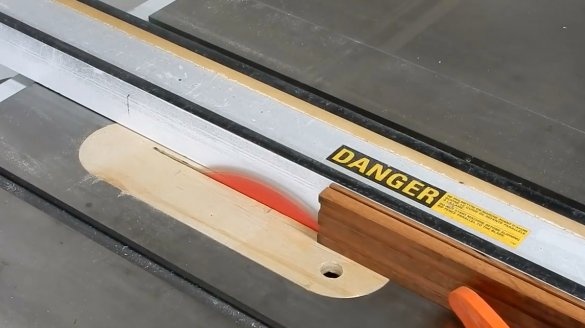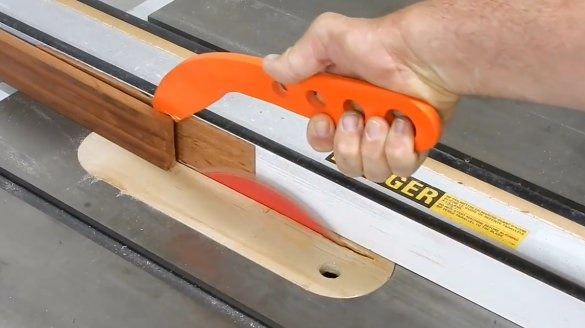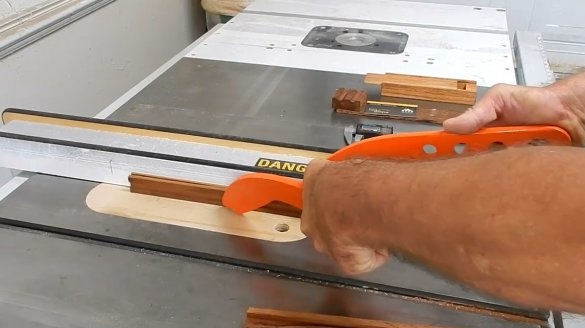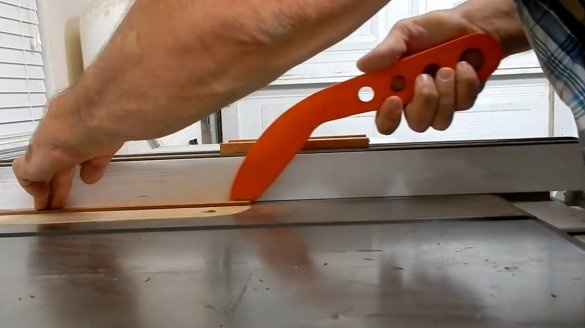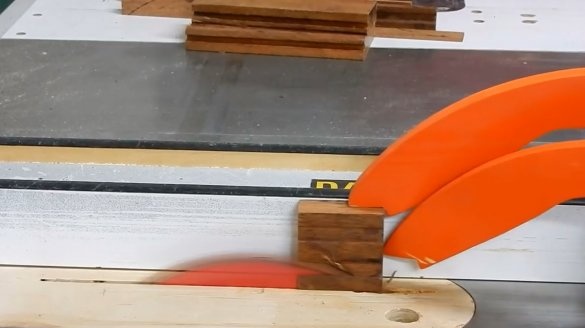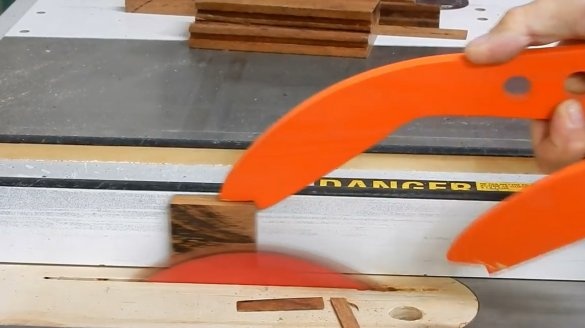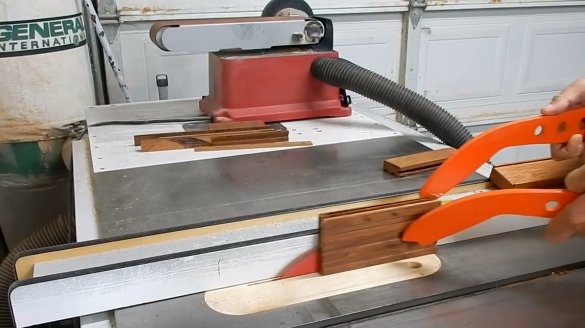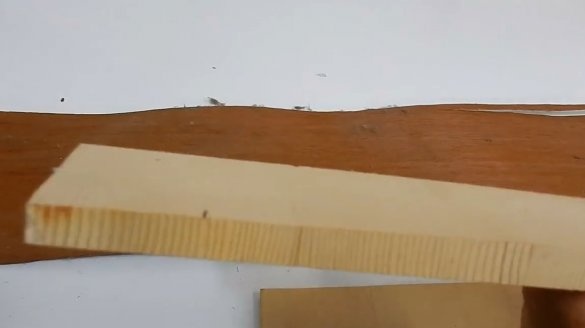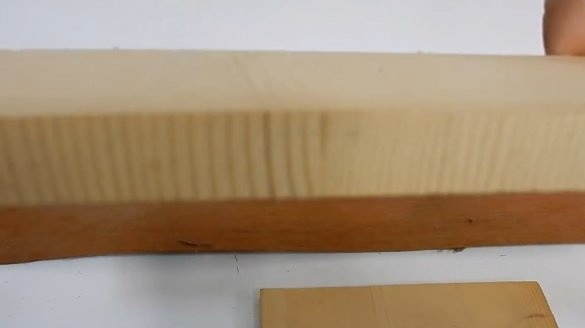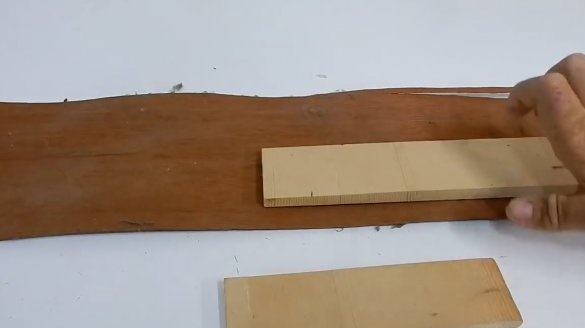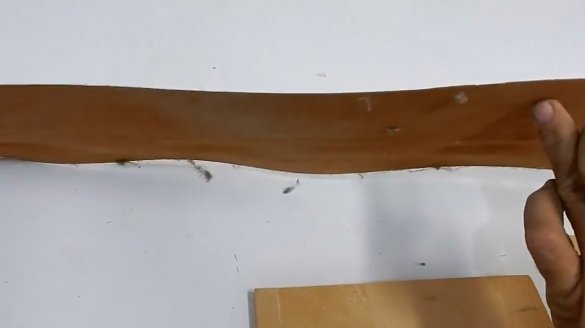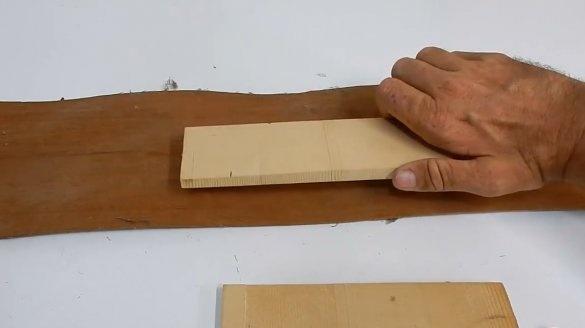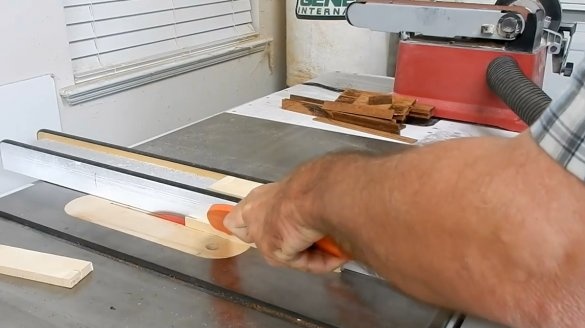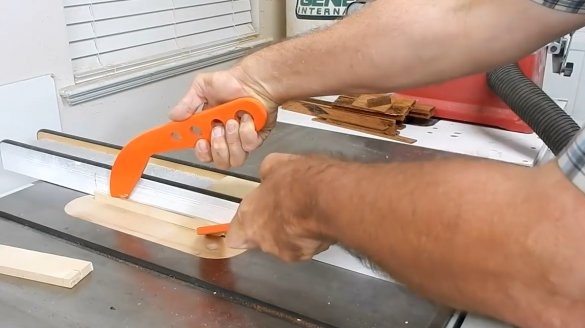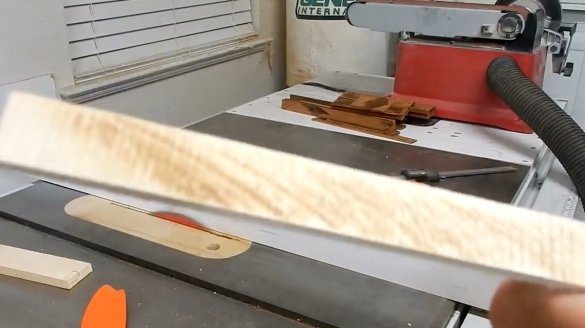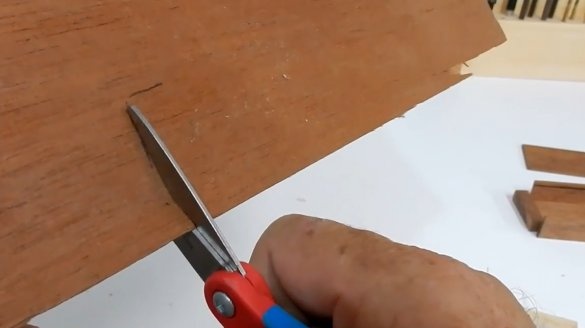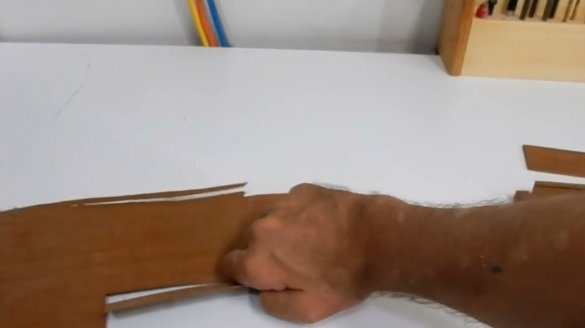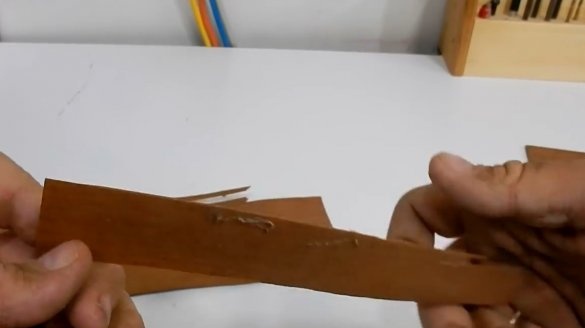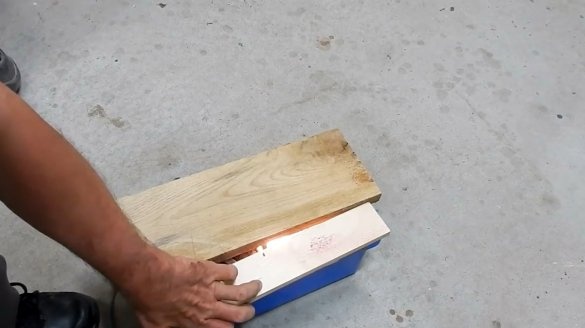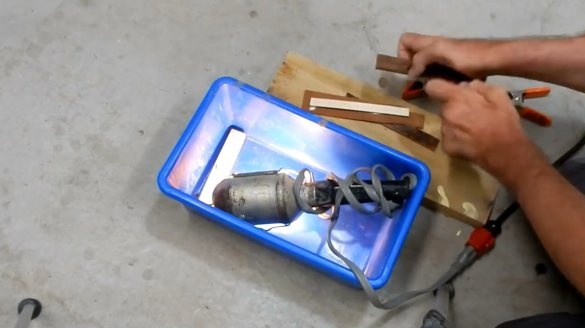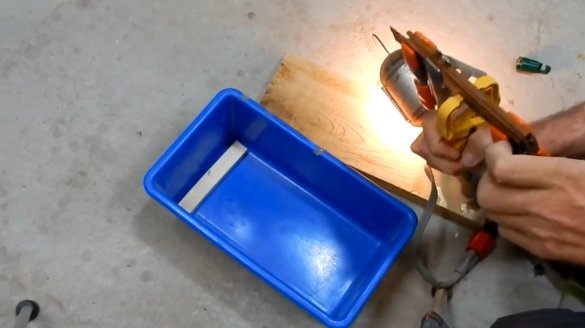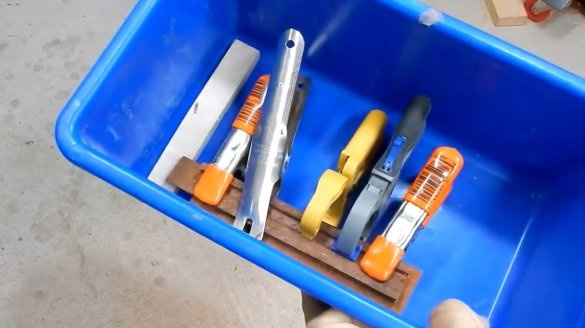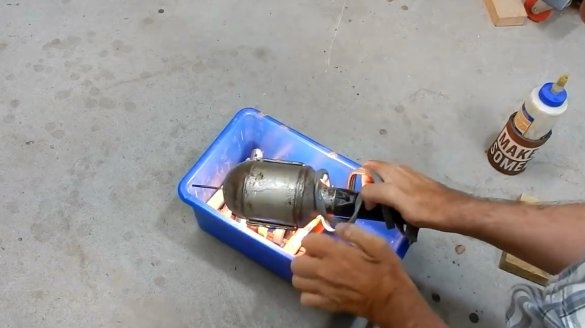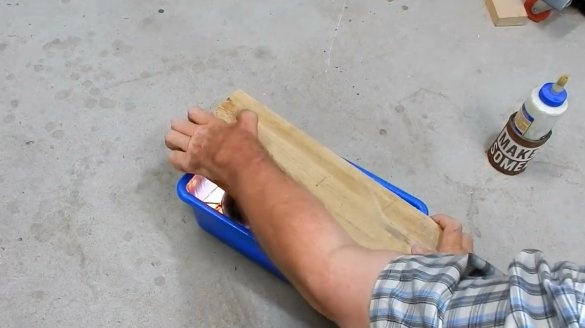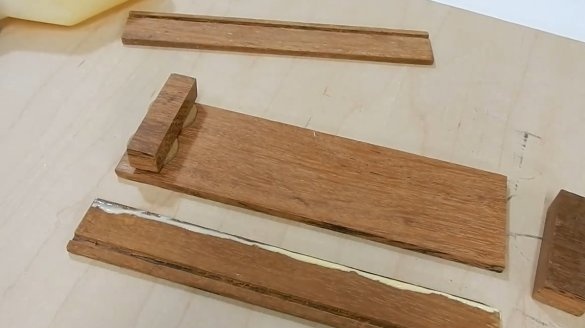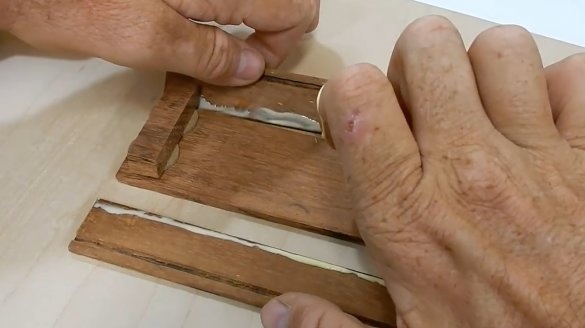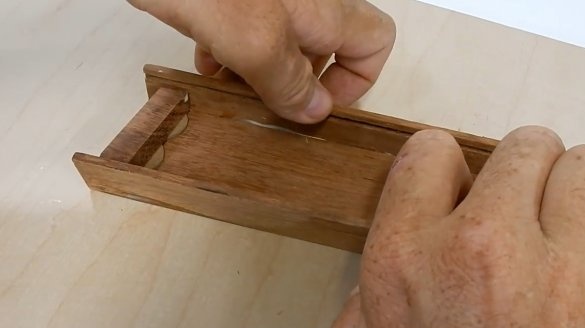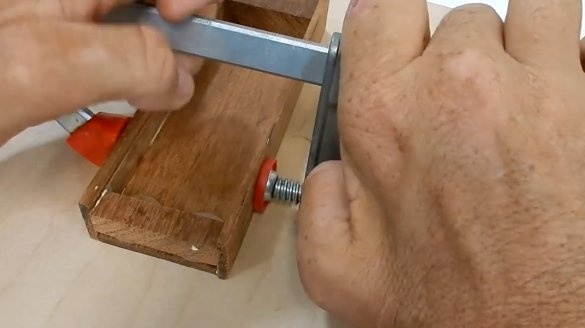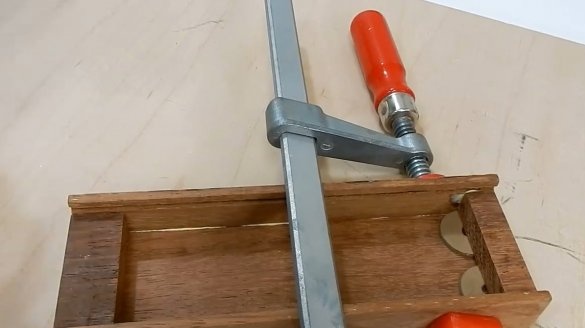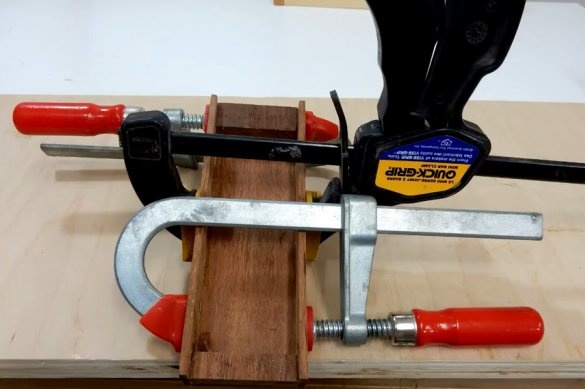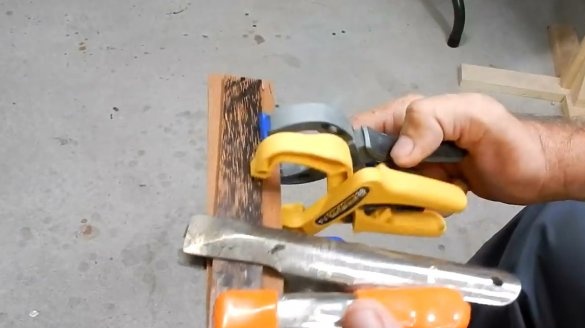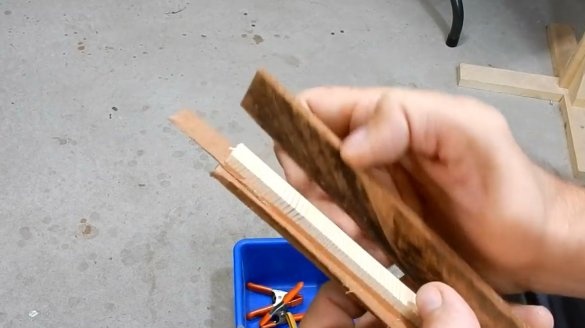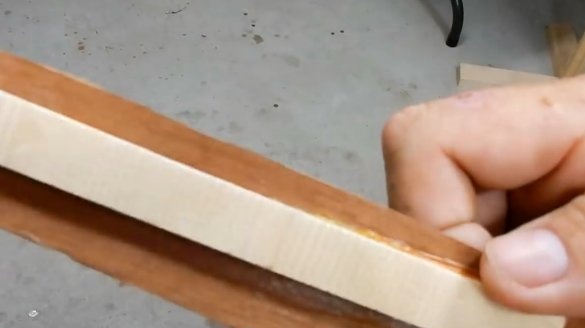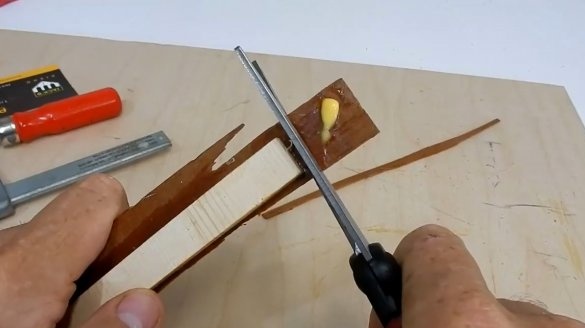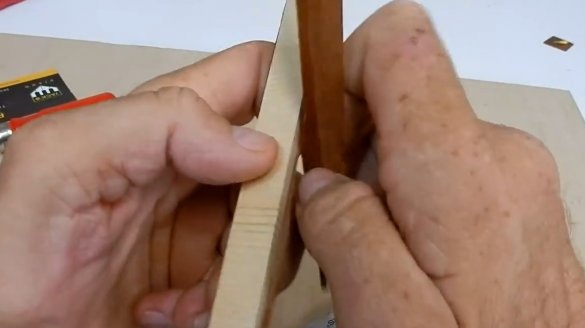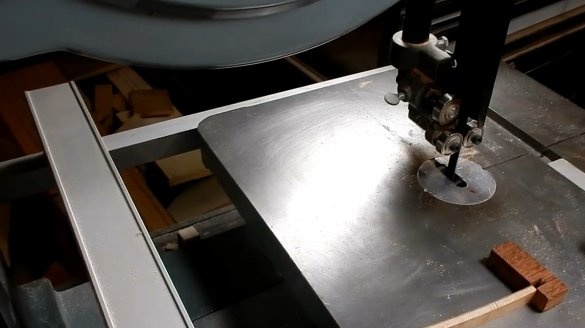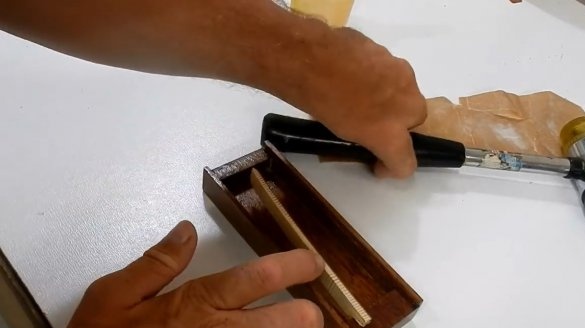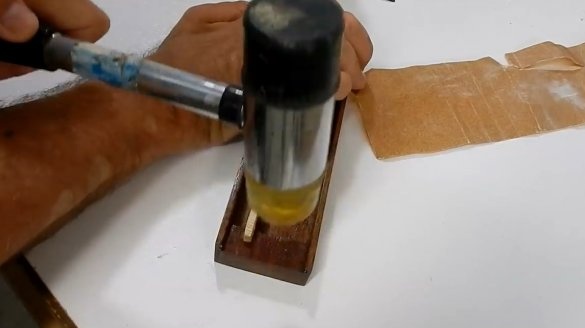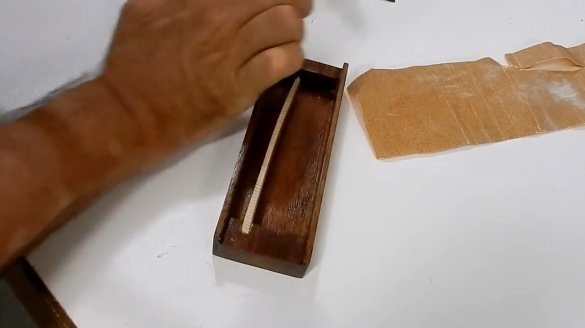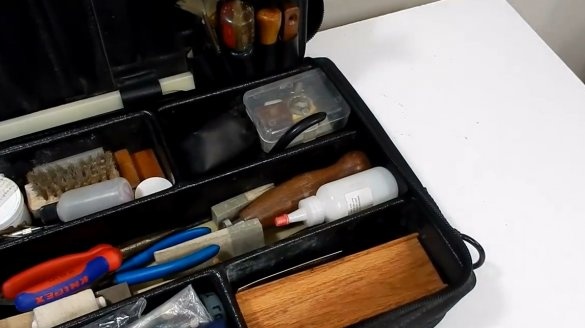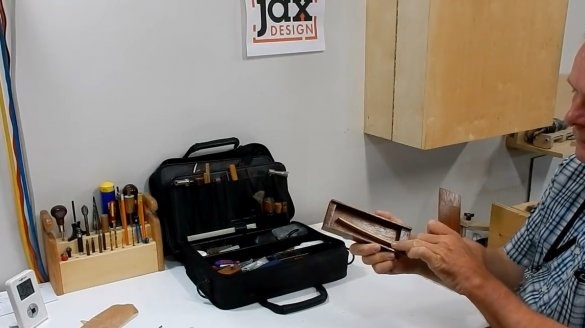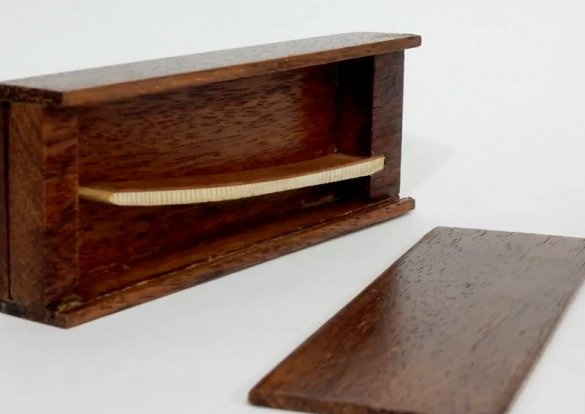In this article, the author of the YouTube channel "Jack Houweling" will tell you how to make an original wood hygrometer. It is designed to measure humidity in the room. This is a very useful tool for Jack, as he is involved in tuning the piano. And seasonal changes in humidity quite strongly affect its sound.
In the previous article A stationary version of such a device was described, but it has a fairly large size. Although the principle of operation is similar, however, the sensor and indicator in this device are combined.
So, before you is a miniature analog hygrometer, Jack made it a couple of weeks ago, and which became the prototype of a later version. This device does its job well and does not require batteries. A slot for thick cardboard paper is made in the side wall of the box. In this case, it is a business card with two marks on it: one for the month of May and one for June.
Now the wizard intends to make another version, and at the same time will show the entire technological process.
But this time he will use a different kind of wood, because the expansion of wood for different varieties has unequal coefficients.
Materials
- Mahogany veneer
- pine board
- Joiner's glue
- Impregnation for wood
- Wax.
Instruments, used by the author.
- A circular saw
- Band-saw
- plastic box
- Protected lamp
- Clamps, hammer
- Scissors.
Manufacturing process.
So, the master begins with the manufacture of the bottom of the box, the width of which will be approximately equal to the width of the business card. She cuts it out of oak wood on a circular saw, having previously set an emphasis on the width of the business card. Moreover, it cuts the workpiece not in one pass, but in two, turning it over. This results in a more even cut, fewer chips and the likelihood of injury.
It also manufactures side walls, cover and jumpers.In the side walls makes grooves for the retractable cover.
Here is a couple of pieces of pine on which you can clearly see how the wood fibers lie.
Jack takes a mahogany veneer and is going to stick light wood on it so that the mahogany fibers are perpendicular to the pine.
But first, he cuts several small strips of pine. Also cuts veneer.
Then he puts the blanks in a “hot” box - dryer and leaves them overnight to dry completely. In fact, this is an ordinary box made of dark plastic, in which the author lowers the lamp. During the night, the heat that the lamp generates will draw all the moisture out of the wood. On top of the box is covered with a wooden board, but not tight, so that moisture can evaporate.
Now Jack glues veneer and light wood, clamps with clamps and again leaves everything in the drawer to dry.
While the sensor itself is drying, the master glues the box, tightens with clamps and leaves to dry.
Now that the sensor has dried out and all the excess moisture has evaporated, you can remove the clamps and trim the excess veneer.
Then, on a band saw, the author cuts a groove in the sensor holder.
It remains now to glue the sensor into the holder. Since the groove is cut very precisely, you have to help a little with a hammer.
So, the hygrometer is ready. Now he will replenish the set of tools for the piano tuner. And in this hygrometer, the author places a card on which he will make marks throughout the year to see the humidity change cycles in his store.
At that moment, when the author took out the plaques from the “hot” box, the humidity inside it was about 20 percent, while the store currently has 45 percent humidity. As you can see in the image, the lower part of the sensor, which is both a pointer, was moistened and bent. This is how this device works.
Here is a humidity sensor obtained by the author.
Thanks to Jack for an interesting and useful device!
Good luck to everyone, and good ideas!



